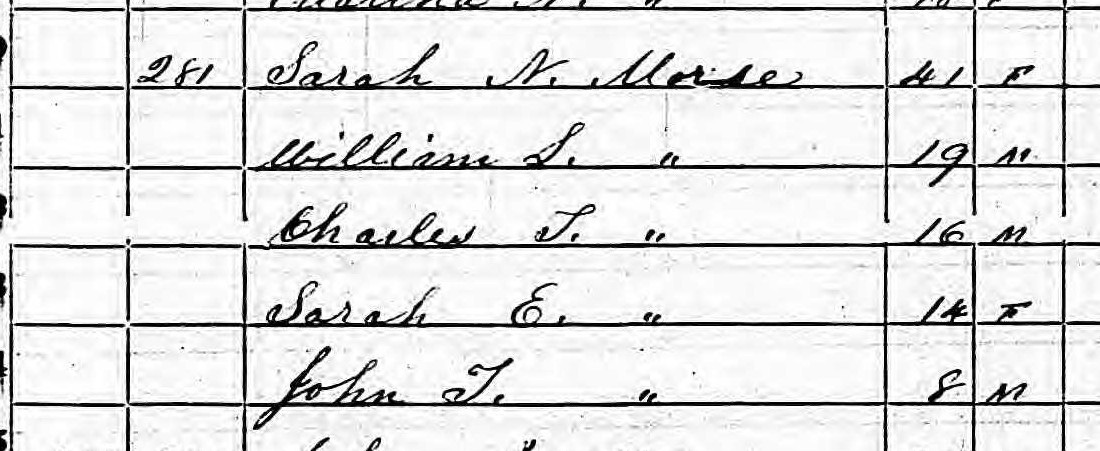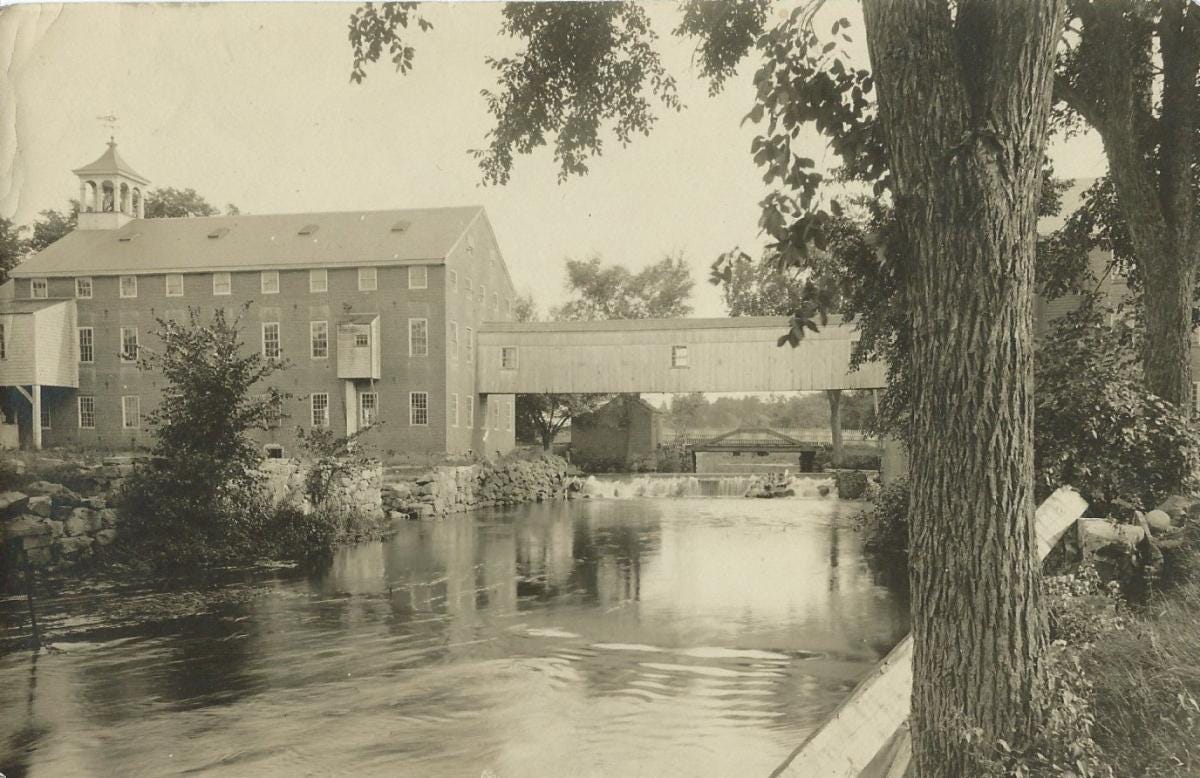Frye Village Stories: Who was the John T. Morse? (degreasing story pt3)
A Shawsheen Village 100 Story
Before Shawsheen Village Frye Village Stories: the business of wool degreasing in Frye Village and beyond
Pieces of the story began to come together while comparing the letter to the editor in the August 6, 1906 American Wool & Cotton Reporter with an Andover Townsman article from September 16, 1904.
The Townsman article described the American Degreasing Company’s lawsuit with James Brandy. You might recall from last week’s story that James Brandy sued American Degreasing over back pay. The company’s response was that Brandy had been hired, not by them, but by “Mr. Morse.”
“The American Degreasing company was organized by Messrs. Babcock and Howland and others to clean wool by the Morse method, a newly invented system.”
So who was Mr. Morse and what was his newly invented system?
John T. Morse was born in 1842 in Portland, Maine, the youngest of five children. From census records, it appears that his father, Stephen Morse, died shortly after he was born. In 1850, John’s two older brothers were working as apprentices. His mother Sarah Morse was listed in the census record as the head of household.
John married in 1871 in Cambridge, MA, to Sarah A. Easterbrook of Brighton, MA. The marriage record included the names of his parents, Stephen and Sarah Morse, and the names of Sarah’s parents. John’s occupation is listed as a “piano forte action maker.” This might be an indication of his later activity as an inventor and mechanical engineer.
Fifteen years after his marriage, in 1886, he is listed in the New York City street and business directories as “Pres. at 435 7th avenue, res. 2245 w 33rd.” At the time, Morse was president of Morse String Manufacturers, making strings for musical instruments, harking back to his days as a piano forte action maker.
The earliest record of Morse String Manufacturers was 1886. Like other Morse businesses that would follow, the company was registered in New Jersey. The company appears to have been successful for a number of years, however in March 1895, the company’s assets were seized.
By then, John Morse appears to have had other business interests.
Engineer and inventor
In the 1900 census, John Morse, living in New York City, listed his occupation as “Mechanical engineer.”
It’s the 1900 census that connected this John T. Morse with the one born in Portland, Maine, and connected him to the Frye Village degreasing concern. Living with Morse and his wife as a boarder was none other than Robert Brailsford, who arranged for the American DeGreasing purchase of the Frye Village mills. His occupation was listed as bookkeeper.
In addition to being a mechanical engineer, John T. Morse was also an inventor. Given how the story unfolds, it’s likely that Morse held a number of patents. However, the only one I’ve found so far on the U.S. Patent Office website was for Patent No. 612,050. Applied for in September 1897, the patent was awarded October 11, 1898.
The how-to of history
At the History Center, since we’ve been researching and writing so much this past year, we often hear our colleagues say, “...and then I went down a research rabbit hole.” This is usually followed by a description of just how deep the rabbit hole was. When the description is followed by “and then I found...,” we all cheer, because we know how good that ah-ha moment, that moment of discovery, feels.
Thank you so much for helping make the research and story writing possible!
What was the Morse Method?
Searching through the U.S. Patent office website, I only uncovered just the one patent for the “tank head.” That was an exciting ah-ha moment!
After running into an untold number of dead ends searching for the inventor, I switch to searching for the key phrase “J.T. Morse.” That’s when his patent No. 612,050 turned up.
That still didn’t answer the question: what was the Morse Method?
It wasn’t until running a search on Google Books that I found Alfred Hawksworth, a lecturer on sheep and wool at the Technical Collage in Sydney, Australia, and his “Australian Sheep and Wood: A Practical & Theoretical Treatise.”
There I found a five-page detailed description of the Morse Method.
The “yolk” referred to here is another word for wool grease or lanolin.
Follow this link to a PDF of the relevant pages of Hawksworth’s treatise if you’d like to read the details about hydro-carbons, caustic alkalies and potash, wool lustre, and the danger of solvent explosions.
Here’s a quick summary
“By the Morse process, the wool is conducted into what is termed a treating cylinder, into which is introduced a refined hydro-carbon solvent (naptha petroleum), filling the cylinder, after a vacuum has been created, thoroughly penetrating the mass of wool, and extracting all its wool grease. The removal of air from the cylinder eliminates all possible danger of fire or explosion.”
Hawksworth continued that “All foreign matter, including wool grease, obtained from the wool, is collected and separated, and the grease barreled for shipment, to be afterwards manipulated for pharmaceutical and other purposes.”
Wool processed by the Morse Method was described as “remarkably sweet.”
Given the number of explosions in degreasing plants, we know that the Morse Method was not foolproof. Whether by the Morse Method, or other methods, degreasing wool using volatile solvents in a vacuum became the standard method of extracting useful materials from raw wool.
Back in Frye Village
The Frye Village degreasing plant was one of at least five wool treatment plants associated with John T. Morse. There’s a possibility that Morse, perhaps through extended family, was involved with a degreasing plant in St. Louis, MO, starting in the early 1890s. One of his early New York businesses was followed by the Morse Oil & Pharmaceutical of Long Island City, NY. Then came Morse Wool Treating in Norton, MA, and after that, the American or General Degreasing Company in Frye Village, Andover, MA.
The Morse Method, with its solvents and vacuum pumps, was a high tech method. The facility in Frye Village could have been state of the art.
ACHC #1987.598.123, view of the Frye Village mills
Next week, we'll trace the ownership and management of the Frye Village, Andover, degreasing plant. Stay tuned!










